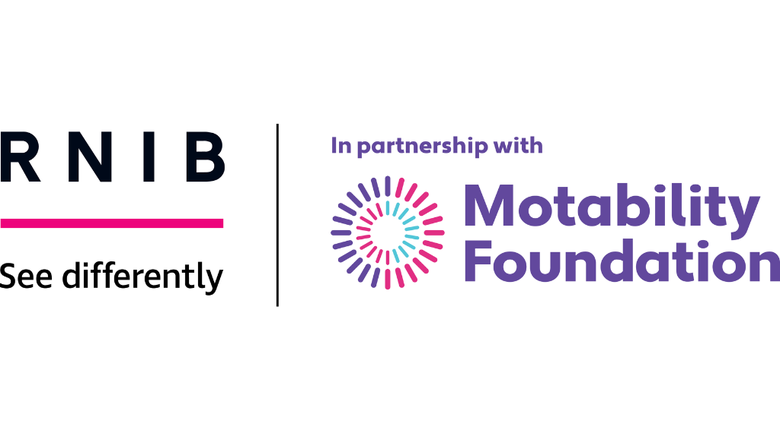RNIB and Motability Foundation partnership

RNIB & Motability Foundation logos
Together, RNIB and the Motability Foundation are leading a bold new initiative to make journeys more accessible for blind and partially sighted people.
This unique collaboration brings together lived experience, resources, expertise, and networks from both organisations to better understand how to drive change and break down the barriers to transportation.
The lived experience of blind and partially sighted people will be key to this partnership, with individuals actively collaborating to identify barriers and co-design solutions.
Building on previous research, RNIB and the Motability Foundation have created this three-year partnership to support their shared goal of improving transport for blind and partially sighted people, ensuring accessibility is key to the development of future transport modes.
Current projects
Future Journeys
Future Journeys is an innovative project exploring how we can make journeys better for people with sight loss.
One in three blind and partially sighted people never or rarely use public transport. We want to change that. We believe transport needs to be reimagined so people can make the journeys they choose.
RNIB and the Motability Foundation are working in partnership with blind and partially sighted people, combining our expertise to imagine and develop new accessible transport solutions.
We’re not just looking at small fixes. This is about surfacing the real challenges people with sight loss face today and imagining bold, alternative futures for inclusive transport.

A senior blind man with a white cane getting on a public bus.
What makes it different
We’ll achieve this through design-led workshops that bring together a diverse mix of people - transport providers, policymakers, technologists, designers and people with lived experience.
We’ve commissioned Bowman & Poole, a company that specialises in creating design fiction films, to capture our findings in more imaginative ways.
By bringing these new possibilities to life through immersive storytelling, both decision-makers and the public can understand what truly inclusive travel could look like.





